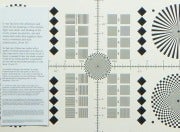The 16X-optical-zoom Panasonic Lumix ZS10 is the touchscreen-equipped successor to last year's Lumix DMC-ZS8. The sum of the DMC-ZS10's parts is a fast-focusing, versatile pocket megazoom with high marks for zoom range, scene modes, 3D still shooting, and in-camera extras. But like many Panasonic cameras, this one presents users with an Auto mode that produces somewhat underexposed images. As a result, you must use the camera's manual settings to get the highest-quality output from it. The camera's GPS capabilities make it handy to have on a road trip, but its in-camera mapping features fall far short of the ones we've seen in the Casio Exilim EX-H20G. The 14-megapixel CMOS-based Panasonic Lumix DMC-ZS10 ($400 as of March 29, 2011) kicks off its impressive hardware specs with a 16X (24mm to 384mm) optical zoom lens, which is stabilized by excellent "Power OIS" stabilization. The camera counters movement at full telephoto with a fluid floating motion, so you'll rarely have to struggle to frame a shot. In manual and aperture-priority mode, aperture settings range from F3.3 at the wide-angle end to F5.9 at full telephoto--that's not exactly a fast lens, but it's not too shabby for a camera with such a long zoom. Manual shutter controls range from 1/4000 second to 60 seconds, not counting the camera's burst modes: You can capture 10 frames per second at full resolution, or 60 fps at a resolution of 3.5 megapixels; and you can shoot 320-by-240-pixel, YouTube-friendly video at 220 fps in the camera's high-speed movie mode (see the sample video below). The Lumix DMC-ZS10's most significant new feature is touchscreen control, which provides a handy secondary way to focus shots, fire the shutter, zoom, and navigate menus. The ability to focus by touching the camera's 3-inch screen is very useful when you want to highlight off-center subjects or simply want to focus and fire as quickly as possible. This feature is also the closest thing to manual focus on the camera, so the fact that it works so well is important. I also appreciated having the physical controls in the mix for zooming and for menu options, as those settings are generally easier to access via the camera's dials and buttons. The Lumix DMC-ZS10's Sonic Speed AF system generally snaps into focus instantaneously, though I did encounter about a half-second of searching at the full telephoto end of the zoom lens. Regardless, Panasonic's autofocus system remains one of the best around at locking quickly on subjects, even in challenging shooting situations. And since the auto-focus process doesn't hold the camera up, shutter lag is practically nonexistent. The addition of touch-based focusing shows off the autofocus speed nicely, and it's a very handy way to pick a subject to lock on when you're using the camera's motion-tracking autofocus function. The Lumix DMC-ZS10 is one of the first Panasonic point-and-shoots to offer a 3D shooting mode, though this capability is limited to still images. It works a lot like the 3D mode that Sony's single-lens 3D-capable cameras use: You set the camera's mode dial to '3D' and pan the camera from side to side; the camera takes a series of photos that it automatically stitches together into an .MPO image. To view the image in 3D, you must play the photo back on a 3D-capable TV set or monitor. Unlike the Fujifilm FinePix Real 3D W3 and the Nintendo 3DS, the DMC-ZS10 doesn't provide a glasses-free display. We hooked up the Lumix DMC-ZS10 via an HDMI cable to the 3D-capable Vizio XVT3D650SV for some informal testing of its 3D imaging capabilities, and the camera generally did a good job of showcasing a 3D effect in images that featured layers reaching far back into the scene. There is a bit of a "cardboard cutout" effect between layers at different depths in the scene, and you'll need to use the camera's own 3D playback menu selection to get the best results when playing 3D images back on a TV set. As in 2D mode, the camera in 3D mode does a much better job in well-lit, outdoor situations than in dimly-lit environments. And because the 3D images are captured at a reduced resolution, you see a bit of graininess and visual noise in full-screen 3D shots. The Lumix DMC-ZS10's 3D output amounts to an extra, enticing feature rather than the primary reason to choose this camera. Setting the Lumix DMC-ZS10's mode dial to the 'SCN' position brings up a menu of 30 scene modes. Though they look like smallish touch-icons, you have to use the camera's physical navigation pad to select them. Along with such common scene modes as Portrait, Sports, Sunset, and Panorama Assist, you'll find a few unique ones. Handheld Night Shot is similar to Sony's Handheld Twilight mode, in that it takes several shots in rapid succession at different exposure settings and then merges them to create a crisp low-light shot without the flash. The unit's High Dynamic Range mode automatically compiles HDR shots in-camera; Flash Burst mode quickly recycles the flash for continuous shooting at about a frame per second; and the high-speed movie mode captures super-slow-motion YouTube clips. Another unique setting is Happy mode, which boosts color vibrancy to near-neon levels. The mode provides a quick antidote to the camera's underexposed shots in Auto mode--but it will satisfy you only if you're a huge fan of oversaturation and unrealistically bright colors. In the Lumix DMC-ZS10's normal high-definition movie mode, the camera shoots 1920 by 1080 AVCHD video at 60 interlaced fields per second, as well as 720p video at 60 frames per second. You can use the full range of the camera's 16X-optical-zoom lens while filming, and the camera has automatic scene-recognition modes (but no full manual controls) while you're filming video. Here again, the Lumix DMC-ZS10's optical stabilization feature does a fine job of keeping long-zoom shots steady. Like many other Panasonic cameras we've tested, the Lumix ZS10 turned in slightly underexposed images in PCWorld Labs' subjective tests for image and video quality. Image quality kicks up a few notches when you use the camera's manual controls and exposure compensation settings, but there's no RAW shooting mode to help with heavy-duty fixes. In PCWorld Labs' subjective tests, the Lumix DMC-ZS10 earned a color accuracy rating of Good, while exposure levels received a score of Fair due to their generally dark, underexposed quality. Our judges rated the camera's sharpness and distortion levels as Fair, too, yielding an overall still-image quality rating of Fair. Click on the thumbnail images at left to see the full-size test shots used for our subjective tests. In videoland, the Lumix DMC-ZS10 turned in scores of Good for both video quality and audio quality, but its video capabilities are serviceable only in well-lit situations. High-definition video shot with the camera in our bright-light test looked smooth, but most clips were noticeably deficient in sharpness. In our low-light test, sample video was far too dark and murky for subsequent viewers to see what was going on, and the camera's autofocus struggled quite a bit. Here are the sample videos we captured in our bright-light and low-light tests. Select '1080p' from the bottom-right menu in each player to see each clip at the highest resolution. The Lumix DMC-ZS10 struggles a bit in the realm of battery life, too, with a CIPA rating of 250 shots per charge of its lithium-ion battery--and that's with the camera's GPS function turned off. Once I established a successful GPS connection, the battery seemed to drain rather quickly; you'll definitely want to turn the camera's GPS features off in order to squeeze more shots out of the battery. The Lumix DMC-ZS10's GPS features are a bit better than most cameras we've seen, but they fall short of the Casio Exilim EX-H20G's excellent in-camera mapping capabilities. For one thing, the camera lacks an interface for displaying your images and video on a map overlay. Instead, you must offload the images to a PC and use online mapping services that can read a photo's EXIF data; so you don't get the instant gratification of seeing your pics on an on-screen map (or figuring out where you are by using your camera). Where the Lumix DMC-ZS10 does shine brighter than a typical geotag-only camera is with in-camera location database and customization options. The camera tags photos with the real-world names of countries, states, cities, and landmarks, and you can enter your own custom location names ("Third Floor Kitchen," "My Backyard," and the like) and use these repeatedly for specific locations. In my informal hands-on testing of the camera's GPS features, the Lumix DMC-ZS10 took about 3 minutes to link up to the satellites successfully; but once the connection was established, it did a good job of identifying key landmarks in San Francisco and tagging photos accordingly. For instance, it correctly pinpointed AT&T Park and Rincon Center--and after I set my own "PCWorld Offices" landmark, it popped up automatically every time I was in the vicinity of the workplace. Geotagged images shot with the Lumix DMC-ZS10 showed up in the proper location on a map when I tested it with Picasa, Google Earth, and Flickr. For optimal results, it's a good idea to manually resync the GPS connection before you take each shot; the camera displays the elapsed time since the most recent GPS sync next to a satellite icon when the GPS feature is active. All in all, the GPS features of the Lumix DMC-ZS10 worked well, but the unit can take quite a bit of time to establish a connection with the satellites, and the feature takes a toll on the camera's battery life if you leave it powered on. Used sparingly, it's a nice feature. If you're familiar with Panasonic's Lumix ZS line, you'll find that the DMC-ZS10 falls in line with what you'd expect: a solid build, good manual options and scene modes, and a few unique features such as 3D shooting and GPS. At $400, we'd have liked to see a RAW mode, longer battery life, in-camera maps, and better overall image and video quality in Intelligent Auto mode, but the ZS10's broad range of features compensate to some extent for its tendency to underexpose images in anything other than broad daylight. Frequent travelers who want a sturdy, versatile compact camera for their adventures will find a lot to like here, as long as they're comfortable tinkering with manual controls and scene modes, and they remember to turn off the GPS features off when not using them.
Hardware and Optics
Shooting Modes and Features
Performance, Image Quality, and Video Quality
GPS Features
Buying Advice
skip to main |
skip to sidebar
Categories
- Apple (2)
- Camcorder (1)
- Camera (2)
- HDTV (1)
- LCD Monitor (1)
- Notebook (1)
- Phone (2)
- Projection (1)
- Trendy Products (4)
Archives
-
▼
2011
(15)
-
▼
April
(8)
- Connect Your PC To Your HDTV
- 3D Twin-Lens P2 HD Shoulder-Mount Camcorder with 1...
- Samsung Wi-Fi Only Galaxy Tab Available Sunday for...
- Review: Panasonic Lumix DMC-ZS10
- Sony to Launch Streaming Music on PSP
- DOCOMO unveils its green Mobile Phone Prototype wi...
- “Home Barrier” your simple and Easy Home Security ...
- Samsung Series 9: The First True MacBook Air Compe...
-
▼
April
(8)





0 komentar:
Posting Komentar